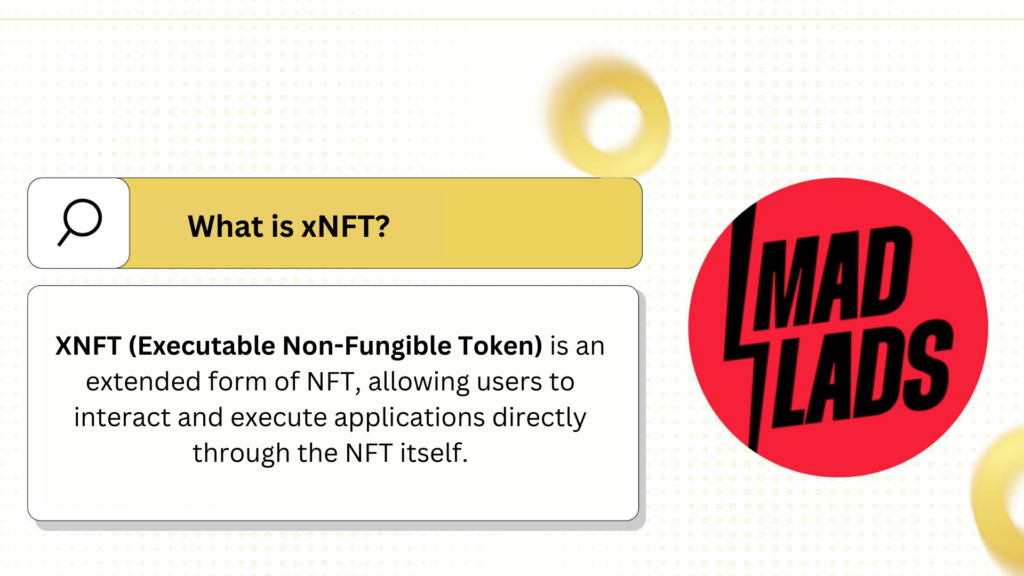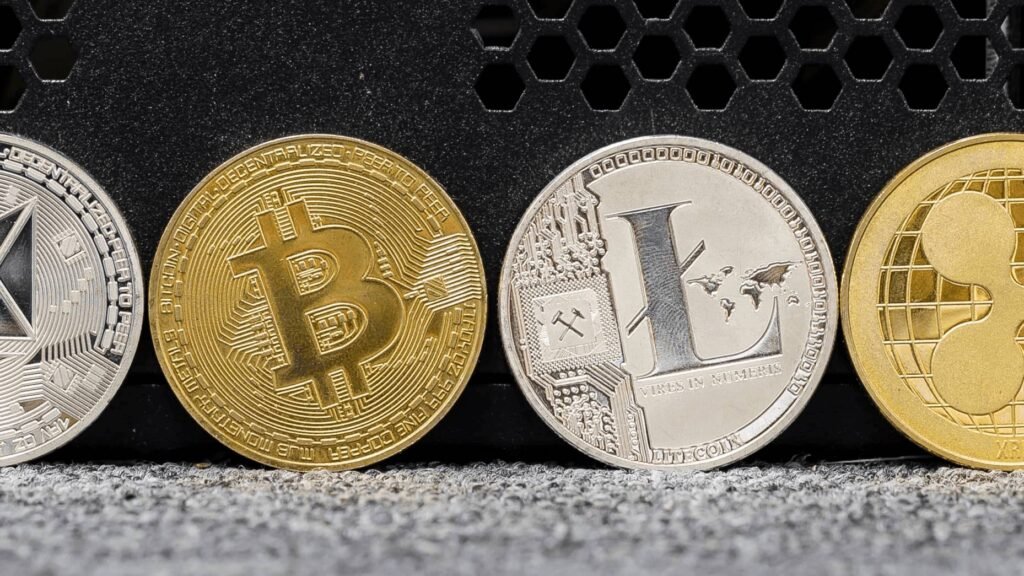What are xNFTs? What makes them different, and what is their potential? Let’s explore xNFTs in this article

What are xNFTs?
xNFTs (Executable Non-Fungible Tokens) are a type of extended NFT that allows users to interact with and execute applications directly through the NFT itself.
Unlike traditional NFTs, which only represent ownership of digital assets like images, videos, or music, xNFTs act as a “gateway” to decentralized applications (dApps), games, or utilities on the blockchain.
- The “x” in xNFT stands for “executable.”
- Development platform: xNFTs are currently built and developed on Solana, a blockchain known for its fast processing speed and low transaction fees.
- Wallet supporting xNFTs: Backpack Wallet is a tool that supports direct interaction with xNFTs.
For example, an NFT from the game The Sandbox is simply an asset for trading. Meanwhile, an xNFT can activate game features directly within the Backpack Wallet.

How xNFTs Work
xNFTs are built on smart contracts and can interact directly with the blockchain through a special execution environment. They are developed on the Solana blockchain using React xNFT, a tool that helps developers create executable NFTs.
The Solana ecosystem plays a crucial role in the development of xNFTs due to its fast processing speed and low costs. Statistics show that:
- Solana processes over 65,000 transactions per second (TPS) with an average transaction fee of less than $0.01.
- The Solana ecosystem has attracted over 2 million monthly active wallets, driving the growth potential of xNFTs.
There are two main factors in the xNFT operational process:
- xNFTs operate within a secure, isolated environment called a sandbox. Sandboxing helps prevent malicious code from accessing data or resources on the user’s device.
- xNFTs use components from React xNFT to display an interface and allow users to interact directly with the application it contains. For example, you can open a game or DeFi app simply by clicking on the xNFT in your wallet.
For creation and storage, xNFTs are created as SPL tokens, the token standard of Solana, similar to ERC-20 on Ethereum. However, instead of just being a regular token, an xNFT is associated with a program ID that points to the executable code stored on the Solana blockchain.
- When a user opens an xNFT, the wallet (such as Backpack Wallet) retrieves the program ID from the blockchain and loads the executable code from the Solana Program Store.
- This code then runs inside the sandbox, and users can use the application or features directly on the xNFT interface.
A unique feature of xNFTs is that they can communicate with each other through events or messages. For example:
- A game xNFT can send a signal to a music player xNFT to play background music when the game starts.
- An artwork xNFT can interact with another xNFT to change colors or effects when specific conditions occur.

Consider the case of Mad Lads, a unique NFT collection on the Solana ecosystem built to integrate xNFT functionality and run on the Backpack wallet. The Mad Lads project garnered significant attention, selling out within minutes and generating $8 million in trading volume and $10 million in revenue in its first month of launch.
By owning a Mad Lads NFT, users can open the NFT and utilize exclusive features such as:
- Participating in games and special events within the Mad Lads ecosystem.
- Managing assets or interacting with DeFi protocols integrated into the NFT.
- Accessing dApps and Web3 utilities directly from the Backpack interface.
Mad Lads acts as an “NFT app” that interacts directly with the Solana blockchain, creating a unique experience for holders. It’s evident that Mad Lads is the first xNFT collection successfully deployed on Solana, generating substantial interest within the Web3 community.
Practical Applications of xNFTs
xNFTs offer a wide range of practical applications within the Web3 ecosystem, going beyond the functionality of traditional NFTs. In the GameFi sector, xNFTs allow users to interact with and play blockchain games directly from their wallets like Backpack Wallet, eliminating the need to switch between different platforms.
In the DeFi sector, xNFTs become a tool for connecting users with services such as staking, yield farming, or asset management without needing to navigate complex web interfaces, providing a faster and more convenient experience.
Furthermore, xNFTs create a breakthrough in digital art and exclusive content by allowing holders to unlock exclusive products, videos, or music directly from the NFT. In the Metaverse, xNFTs can represent virtual assets such as land or digital items while unlocking special privileges like participating in events or staking assets to earn rewards.
Notably, xNFTs also support DAO governance functionality, enabling holders to participate in voting and enjoy exclusive benefits from the community. Moreover, xNFTs can serve as digital identities or proof of ownership on the blockchain, contributing to enhanced transparency and security.
With their direct execution capabilities and diverse integrations, xNFTs are transforming how users interact with digital assets, from GameFi and DeFi to the Metaverse and digital art. They not only improve user experience but also help projects build strong communities and develop sustainable ecosystems.
In the future, xNFTs are poised to become an optimal tool in the Web3 era, unlocking new opportunities and economic models for blockchain projects and users worldwide.
Challenges of xNFTs
Despite their vast potential, xNFTs also face several challenges, such as:
- Code security: xNFTs containing executable code can be vulnerable to attacks if not thoroughly audited for security.
- Market adoption: The concept of xNFTs is still relatively new and requires time to gain traction and attract wider community interest.
- Limited ecosystem: Currently, xNFTs are primarily developed on Solana, while other blockchains do not yet support this standard.
xNFTs represent a new advancement in the NFT space by combining digital asset ownership with code execution capabilities. With support from the Solana ecosystem and wallets like Backpack, xNFTs offer immense potential in areas such as blockchain gaming, decentralized finance, and digital asset management.
Despite the challenges, xNFTs are gradually establishing themselves as a new trend in the Web3 era. Investors and developers should closely monitor this trend to seize opportunities in the crypto market.
Read more: Coral – The Platform Behind Anchor, Backpack, and xNFT.

